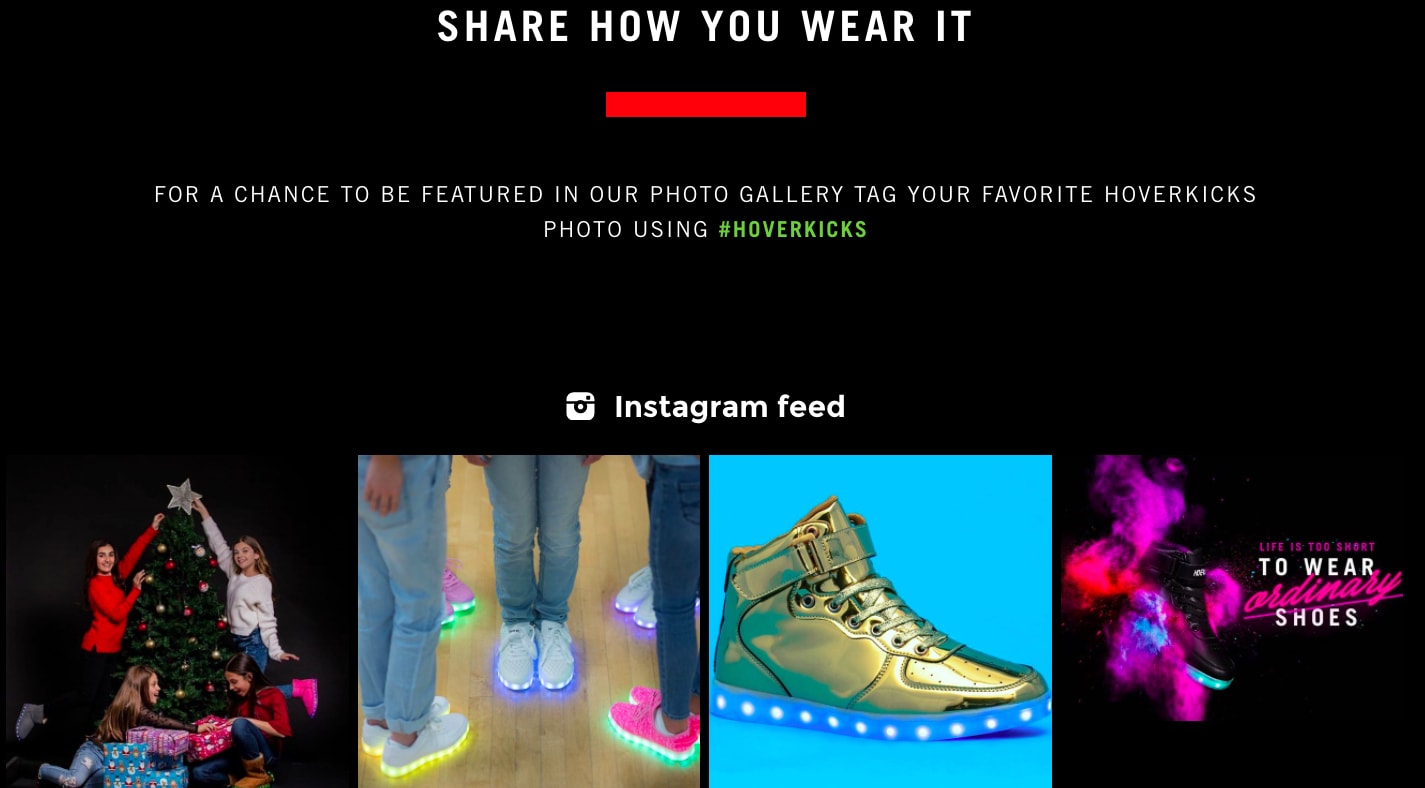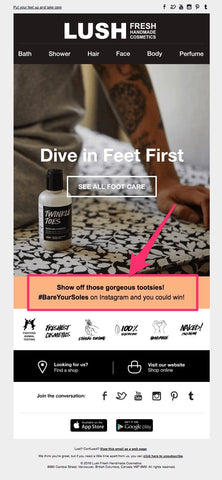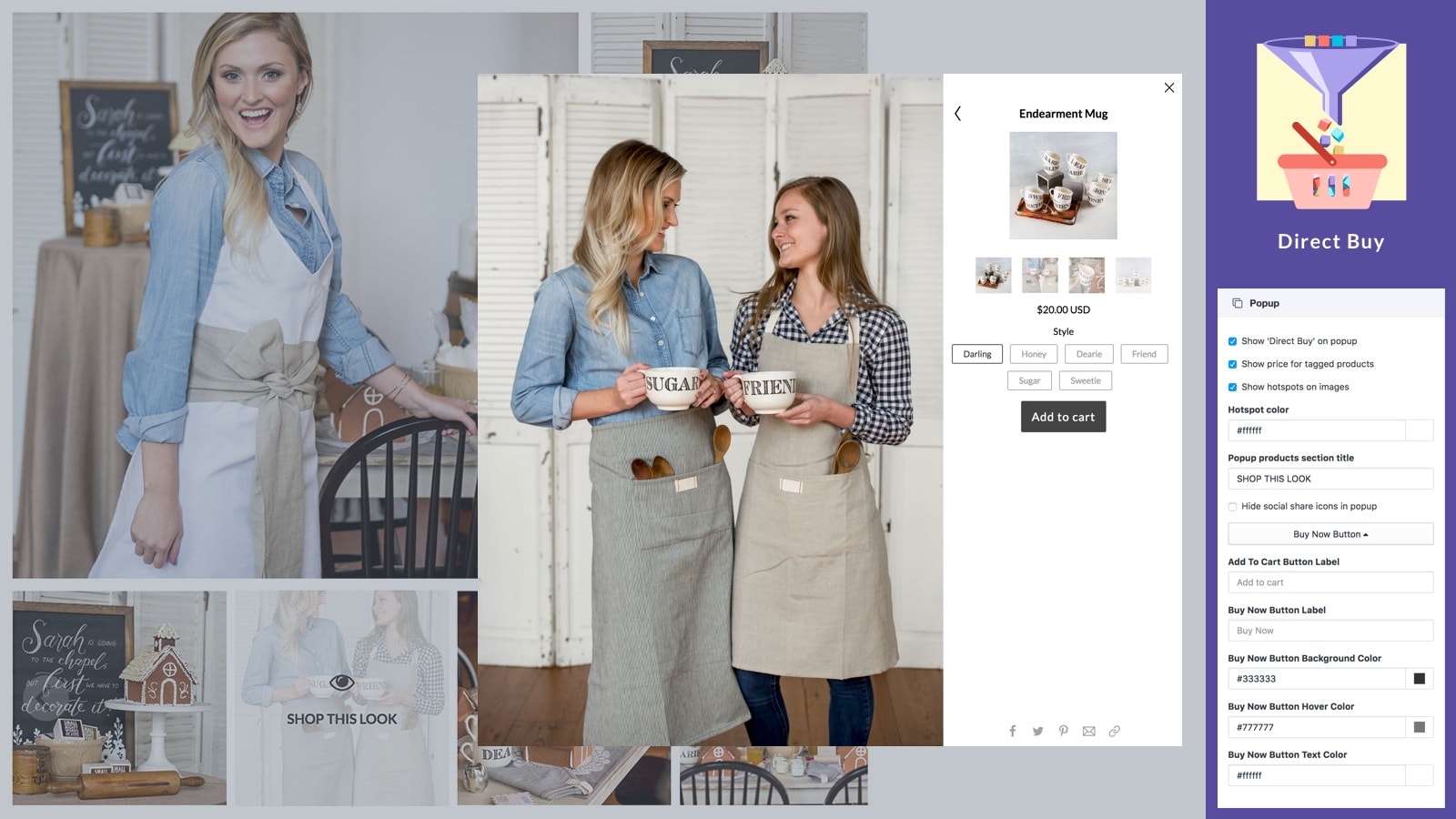People are generally wary of direct marketing messages from a business. That's why many brands invest time, effort, and money to produce content that can overcome consumer skepticism and earn people's trust.
But what if you could source a steady supply of this kind of content without having to create it all yourself?
What if you could recruit customers to your team as marketers, content producers, photographers, and influencers who are willing to volunteer their support?
By incorporating user-generated content into your marketing efforts, you can.

Free Reading List: Social Media Marketing Tactics
Want to learn more about how social media can help drive sales? Download our free, curated list of high-impact articles.
Get our Social Media Marketing Tactics reading list delivered right to your inbox.
Almost there: please enter your email below to gain instant access.
We'll also send you updates on new educational guides and success stories from the Shopify newsletter. We hate SPAM and promise to keep your email address safe.
What is user-generated content?
User-generated content (UGC) is content created by the people who interact with a brand, not the brand itself.
These “users” can be customers, employees, volunteers, or engaged members of your audience, and the “content” they generate can be photos, videos, reviews, social media posts, you name it.
User reviews are a form of UGC. So are Instagram photos shared by customers and unboxing videos on YouTube featuring your products.
Companies across a variety of industries harness content generated by users to overcome one of the greatest hurdles to purchase: trust.
In one survey, 54% of respondents said they trust information from online reviews and recommendations from their peers, whereas 20% trust information that comes from the brand itself.
People trust people more than brands and UGC is content created by the people.
Because UGC isn’t produced by you, it also comes with a number of benefits outside of building trust. You can:
- Save time on creation by supplementing your own original content with crowdsourced content.
- Expand your reach when customers evangelize your brand within their own social networks through the content they share.
- Engage your community and create a stronger relationship with customers by involving them in your marketing and getting to know them better.
UGC can be used in both short-term campaigns and long-term marketing strategies, but in either case there are three key requirements you need to meet:
- A “call to create” that gets people to produce content they actually want to create.
- Channels for sourcing and collecting submissions.
- A plan for moderating, sharing, and using this content in your marketing.
How to source user-generated content
If you find your target users naturally share content that relates to your brand, you’re in luck—you’ve already got some fuel for your UGC strategy.
But if they aren’t just yet , you’ll need to find a creative overlap between the kind of content that can help build your brand and the kind of content people actually want to make and share.
The type of content you encourage users to create doesn’t need to be directly about your products. Come up with your own imaginative angles while staying mindful of the reasons people share content in the first place.
People have very personal and human reasons for sharing content. According to a survey conducted by CoSchedule:
- 49% share to inform, influence, or inspire action around the products they care about
- 68% share to give their networks a better sense of who they are and their identity
- 78% share information online because it lets them stay connected to people they may not otherwise stay in touch with
- 69% share information because it allows them to participate in the world
- 84% share to support initiatives or brands they care about
That said, one of the most popular approaches to UGC is to get customers to take pictures of your products and share them on social media under a branded hashtag.
Create a branded hashtag

Source: Hoverkicks
Branded hashtags are the easiest way to encourage, collect, and automate user-generated content, especially on Instagram and Twitter.
That’s because you can share them along with a call to create anywhere you’d like:
- Thank you emails
- Social media bios
- Package inserts
- Your website
- A poster or TV display
- Through word of mouth
- Etc.
Best of all, you can use different hashtags to organize user-generated content by goals. You can have one for showcasing your customer’s stories and another for your employees to share glimpses into your company culture.
For example, at Shopify we use #myfirstsale for merchants to share stories about the first orders they receive, and we use #lifeatshopify for employees to share what it’s like to work here.
Searching the hashtag lets you see all your submissions in a single feed, making it easy to choose the content you want to feature. Just be sure to include clear instructions around how to use the hashtag and tag your brand, and where the content will be featured.
Incentivize submissions with contests and giveaways

Source: Shore Projects
Contests and giveaways are a great way to grow your business in general. But they’re also a hard-to-resist incentive for participating in your brand’s UGC efforts.
A simple photo contest where users submit their best photos that fit a certain theme, for example, can be used to crowdsource future posts for your social media calendar and reward the most engaged members of your audience.
In the example above, Shore Projects uses #GoodTimes and #ShoreProjects to collect shore-side lifestyle photography, along with clear instructions about how to participate in the contest. By embedding a gallery below the contest rules, they also lead by example, giving users an idea of what kind of content they need to create and submit in order to win.
You can power your contests manually using hashtags, or streamline them using tools like Gleam or Typeform that let users upload their content and information.
Ask for UGC in your post-sale emails

Prompts for submitting user-generated content can also be incorporated into your post-sale emails. The same way you might follow-up with customers to leave a review, you can ask them to share photos or videos of themselves using your products.
With Shopify apps like Loox, you can even source reviews along with user-generated photos through your follow-up emails, getting visual reviews with images that you can repurpose in a variety of ways. Adding a small incentive can help, such as a discount on their next purchase.
Ideas for leveraging user-generated content
Encouraging a steady stream of user-generated content can be a challenge, but luckily there are several ways to make the most of each asset you acquire, incorporating it into your website and social media marketing strategy.
Repost UGC on your own social profiles

Source: Luxy Hair
Perhaps the easiest way to leverage UGC is in your social media mix, sharing it with your audience while tagging the user who submitted it to highlight them.
Not only does this save you from creating your own original content all the time to post consistently, but it can help you engage your existing customers with the potential to tap into their audiences as well.
If you’re going to be running an ad with UGC, however, it’s best to ask the creator for explicit permission first to avoid disputes over copyright.
Embed UGC on your website

Aside from expanding your reach, UGC can also be used as social proof to build trust on your own website.
Media galleries are often used to showcase a brand’s in-house content to website visitors. But by carefully curating the content that shows up here and positioning it as a gallery of submissions, you can use UGC to show off your customers and your products together.
There are plenty of Shopify apps for creating Instagram galleries, such as Covet Pics or Tagtray—both can help you collect and embed user-generated social content on your website. Just be sure you have a way to moderate submissions so that the embed only displays what you want it to display.
Automatically pulling in everything under a certain hashtag without moderating is a risk you want to avoid, especially since public hashtags are available for everyone to post under.
Create a “social media wall” for your retail location or event

People naturally snap photos and videos at events to share online. Setting up a process for organizing and displaying these captured moments gives you another way to encourage more submissions, while providing your audience an additional avenue to participate with your brand.
Social media walls let you pull in photos and comments from several channels and display the conversation as a feed for others to check out and contribute to. You can embed it on your website or display it on a TV at your next event and watch it populate with photos from guests.
If you're interested in this approach, you can check out Walls.io (free plan) or Everwall for a solution to display your online user-generated content offline.
Tap into the voices of your customers
Before you can earn a customer’s business, there’s something else you need to earn first: their trust.
User-generated content lets you rally the voices and collective creative power of your community to make and share content that is naturally persuasive and authentic. And we've only scratched the surface with all the ways you can implement user-generated content.
Get creative with how you source and leverage user-generated content and you’ll be surprised at what it can do to improve your marketing efforts.

